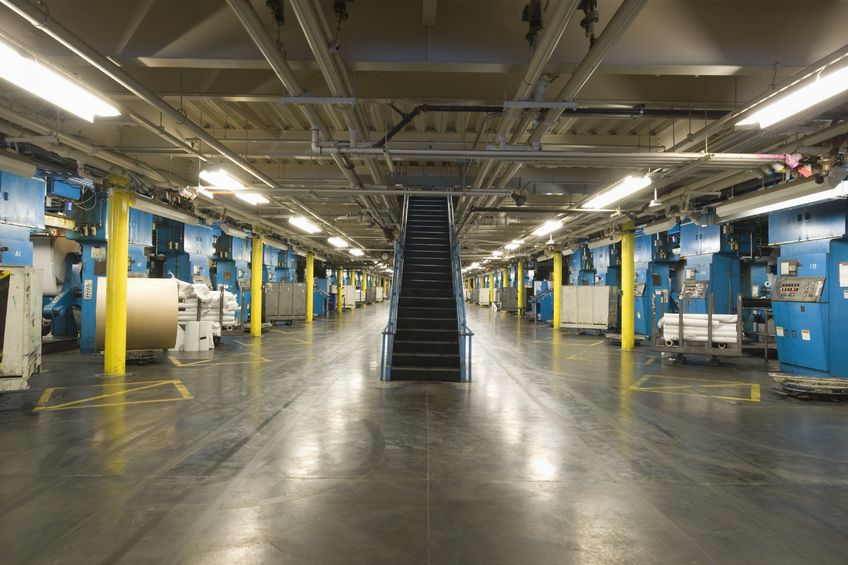 “Economic activity in the manufacturing sector expanded in January for the 20th consecutive month, and the overall economy grew for the 68th consecutive month, say the nation’s supply executives in the latest Manufacturing ISM Report On Business”. The Institute for Supply Management’s (ISM) manufacturing index for January, 2015, was 53.5.
“Economic activity in the manufacturing sector expanded in January for the 20th consecutive month, and the overall economy grew for the 68th consecutive month, say the nation’s supply executives in the latest Manufacturing ISM Report On Business”. The Institute for Supply Management’s (ISM) manufacturing index for January, 2015, was 53.5.
The ISM’s manufacturing index is based on these 5 main indicators’ data from their monthly surveys:
Production levels
New orders placed
Inventory levels
Supplier deliveries
Employment environment
A value of 50 is neutral, anything over means expansion. Generally, these data show a growing economy, and manufacturing specifically, but the rate of growth is slowing.
Data from late 2014 suggested that the manufacturing sector is expanding and will likely continue to do so. 16 of 18 manufacturing industries grew last fall, and new orders accelerated. Only petroleum and coal reported a decrease in activity.
Most of the fall 2014 news above is from an AP article by Paul Wiseman dated November 3, 2014. This article further reports a weakening in overseas demand, which was more than offset by domestic demand. Despite a slowing in overseas demand, exports gained, along with employment. The Fed still plans to keep short-term rates near zero, where they’ve been since 2008.
So all this would suggest a rosy 2015, especially for manufacturing (other than coal and petroleum). However, the global petroleum situation may suggest a more problematic future economically. Not only that, but if the west coast port strikes last a significant time, there will be more bad news.
But a problem in the oil business means problems with transportation and energy. These are key ingredients in the world of manufacturing.
As we all know the growth in oil extraction via new fracking technology has transformed the US oil business. If you are involved in this business the recent past is likely to have been very positive. However, as reported above, there has been a business decline as prices have plummeted.
Good for us consumers but bad for the oil business? Perhaps not. We would appreciate your comment contributions on our blog.
For decades the Saudi’s and their OPEC partners have largely controlled the market price of oil. This control is accomplished by management of the overall oil supply at a level necessary to bring roughly $100/barrel over the past couple of years.
In recent years both Russia and now the US produce 10-11 million barrels/day, which is about the same level as Saudi Arabia. These 3 countries produce about 35% of the entire world’s oil supply. These non-mideastern sources represent a reduction in the Saudi’s ability to control the world oil market.
Recently we have seen a sharp decline in the price of oil, and thus the gasoline price at the pump. While we are reluctant to wander into the world of geopolitics, this situation could represent a big warning, and one in contrast to the otherwise rosy economic news.
Saudi Arabia has maintained production in the face of the decline in oil prices, in contrast to previous low price occurrences. Some believe this is in order to cull the higher cost producers in some sort of long term strategic maneuver. The higher cost producers include Russia, Iran, the North Sea producers, and our own higher cost frackers. As these producers have grown, the Saudi influence has lessened and so we may be witnessing their response.
The Saudi’s actions may well explain the decline in petroleum reported above, and could represent a long term danger for the US oil and gas industry generally. Evidently the Saudi oil is the low cost supplier, so they may be able to withstand extended lower prices while the other suppliers are eliminated. Then they can better manipulate production in order to ensure prices are where they want—at a level needed to fund their welfare state and the lavish life of the many royals.
Over the long term many expect oil and gas growth to represent a major US economic boom. Yet here we see a geopolitical aspect that could counter our potential success. So a word to the wise is to keep a sharp eye on US-Saudi oil relations. Our new capacity means we have new leverage, but not without risk, especially to the higher cost producers.

